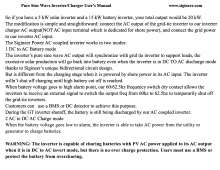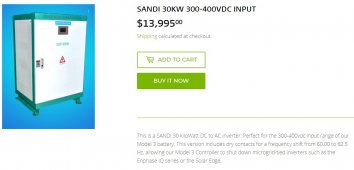Has any of you used a Tesla model 3 or Y battery for solar backup? Either individual modules (~100V) or whole pack (~400V).
I have a battery pack already, and I have solar on the roof with Enphase IQ-8 microinverters.
I'm thinking of using this inverter:
https://www.sigineer.com/product/96...ine-for-tesla-model-3-lithium-battery-module/
And using 2 inner 25s modules in parallel (Voltage range ~92-105V according to my calculations).
Here is the manual for the above inveter:
Wondering if anyone here done something like that? Seems like in addition to the inverter/charger I also need some kind of BMS, any recommendations of what to use?
Thanks!
I have a battery pack already, and I have solar on the roof with Enphase IQ-8 microinverters.
I'm thinking of using this inverter:
https://www.sigineer.com/product/96...ine-for-tesla-model-3-lithium-battery-module/
And using 2 inner 25s modules in parallel (Voltage range ~92-105V according to my calculations).
Here is the manual for the above inveter:
Wondering if anyone here done something like that? Seems like in addition to the inverter/charger I also need some kind of BMS, any recommendations of what to use?
Thanks!









